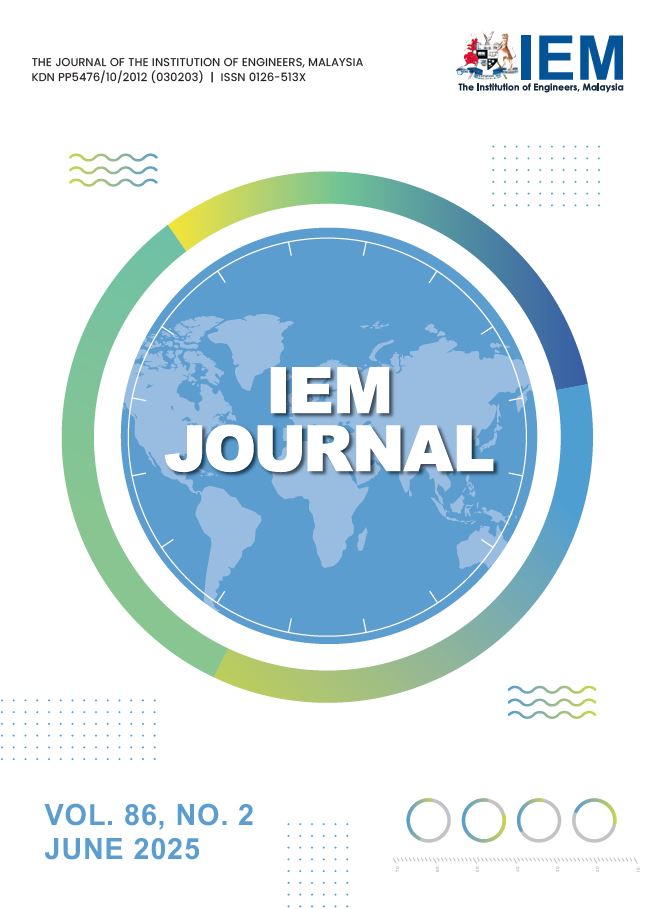Tunnelling in Negative Face Loss Environment - From Risk To Opportunity
DOI:
https://doi.org/10.54552/v86i2.280Keywords:
Tunnel-soil-pile interaction, Tunnelling-induced pile responses, Transient effects, Negative face loss, Distributed fibre optic sensingAbstract
A full-scale field study was conducted during bored tunnelling beneath an existing building on the Klang Valley Mass Rapid Transit - Putrajaya Line in Kuala Lumpur, Malaysia, to investigate tunnel-soil-pile interaction in negative face loss tunnelling environments. The study combined field measurements and numerical analysis to assess the transient effects of shield tunnelling on a loaded experiment pile, which was equipped with strain gauges, an inclinometer, and distributed fiber optic sensing. The pile was pre-loaded and monitored in real-time throughout tunnel construction. Three-dimensional finite element modelling simulated the pile’s transient responses, using actual recorded TBM driving data. The field observations and numerical results deepen the understanding of pile behaviour during various stages of tunnel excavation and successfully validate the hypothesized movement paths in a negative face loss scenario. The validated numerical framework provides a basis for further parametric studies aimed at optimizing tunnelling parameters. Control of tunnel volume loss is identified as crucial, with an optimal face pressure range recommended to be between 0.8 and 1.1 times the overburden pressure. Additionally, a grouting pressure range of 1.1 to 1.5 times the overburden pressure is found to be beneficial in minimizing ground settlement. Overall, the findings significantly advance the understanding of tunnelling-induced effects on piles, highlighting a delicate balance in managing risks while seizing opportunities to enhance tunnelling safety and efficiency.







